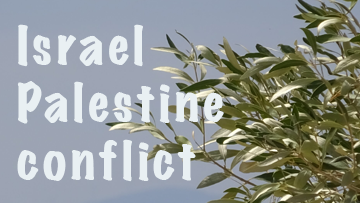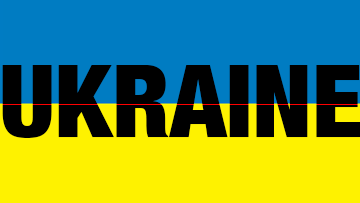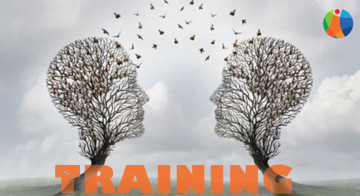It is difficult to discern the history of the genesis of the Dalits, as their history is intermingled with the Indian religious and mythical substances. The historians are not in unison in this case; rather in some issues related to it, they have created more complicated ambiguities. But it is more or less acknowledged now that some targeted groups have been marginalized systematically. Then what was the story?
By Muhammad Tanim Nowshad
The most common story once prevailed in the history books narrated the Aryan invasion theory. The foreign marauders of central Asia, Russia, and Iran attacked the local native and primordial communities and forcefully marginalized them, turning them into perennial slaves. To ensure this new social fabric, they initiated the caste system, in Sanskrit the Varnasrama. Subsequently, the Hindu myths were devised, rehashed, and recast according to the vested interests of the invaders. It is true that the Varnashrama or the caste division was mentioned in the Srimadbhagabat Gita, a Hindu religious scripture and a part of the great Hindu epic Mahabharta. But the people could move to the upper castes through their virtues and good deeds or fall down to the lower castes if they committed misdeeds or wronged according to the thesis of reincarnation.
Besides, if any caste member can attain the quality of performing work of some other caste, he could move there. A common example is Dronacharya, who was a Brahmin by birth, but he learned the warfare and the techniques of wielding weapons with great endeavor that he could move to the Kshatriya caste. Later he was conferred the duty to teach the princes of the kingdom wielding the weaponry. Krishna, the Avatar of Lord Vishnu, devised and ordered the Varnashrama according to peoples’ qualities and deeds (Gita 4:13). So, it was not a cul-de-sac at that time and the members of one caste could easily shift to another as no caste was impervious to the members of the other. However, this information is contested. The problem happened in the case of the Dalits. They were eventually ousted or primordially kept out from the caste fabric. According to the Rigveda, the most important scripture of Hinduism, from Brahma, the creator of the universe and the cosmic being, emerged four castes; the Brahmin from his mouth, the Kshatriya from his hands, the Vaishya from his thighs and the Sudra from his feet (Rigveda 10:90). The Dalits were none among these four. Hence, the Manusmriti also known as Manu Samhita (Laws of Manu) codified the laws of the caste system and distributed the duties among the caste members (verses 2.26 – 6.96, 7.1 – 9.324, 9.326 – 9.335 etc). The Brahmins perform the religious rites and teach higher castes religious and strategic lessons in order to conduct the statecraft. The Kshatriyas rule the kingdom and govern it and safeguard the land and the people and protect the land’s sovereignty. The Vaishyas produce agricultural products; they are also engaged in merchandise and administer trade and commerce. Manusmriti was named after Manu, who was also the primeval man or the archetypal man or the progenitor and/or the father of mankind.
The term ‘Dalit’ is Sanskrit, which literally denotes such a person, who is trampled. It means he has been placed at the nadir of the society and he is entirely repressed by the social system. The Dalits are also called the untouchables. It is not the reason that they are considered dirty because they do the dirty menial work. They are considered by birth dirty to other caste members as they have been born at the nadir of the caste fabric or they are kept aloof from the caste hierarchy. The Dalits are the most wretched, oppressed, hopeless and downtrodden communities of human history. They are also called Harijan, the term once coined by Mahatma Gandhi, the father of India. Harijan means the people of God, although God kept his eyes shut before his people or averted his face from them most of the time in history. Gandhi was sincere to the Dalit communities and preserving their interests, he even published a magazine named ʽHarijan’, which lasted from 1933 till 1955. But Gandhi, a Gujarati Vaishya, a member of the caste of the traders, never tried to violate or break the caste system. The Dalits are officially recognized as the scheduled castes; in India and Bangladesh, they enjoy the favor of positive discrimination.
All poverty-stricken communities have some ways out, some ladders to climb upon, but the Dalits do not have anything. Why? Even if a Dalit is the wisest and the most intelligent among people, he is also compelled to be engaged in the sweeping and cleaning profession. Their progeny must stick to the same profession. It is worse than genocide. In genocide, you kill some people of a generation once, but this seems to be a millennial genocide and a continuous process of sustaining subjugation and discrimination against some communities. The Dalits sweep and cleanse streets, drains, and sewages, remove human feces, help remove and clean the viscera of corpses in forensic labs and other undesired jobs. The caste system is now static. You cannot change your caste now. Some movements took place in the past to avoid or disregard the caste system or minimize its importance or at least to lessen its drastic tenacity. But no movement took place to ensure that one can change his caste through his deeds and virtues. At least I do not know. The Vaishnava movement of Sri Chaitanya (1486-1534), the Matua Mahasangha movement of Harichand Thakur (1812-1878), the Harirami movement of Balaram Hari (1825-1890) were once enlivened from these motives. The movement of Fakir Lalon Shah, a mélange of Hinduism and Islam, was invigorated once with the same tempo. These mainly took place in Bengal. Outside of Bengal the Ravidassia movement of Saint Ravidas (1267–1335), the movement of Saint Kabir (1398–1518) and the itinerant movement of Guru Nanak (1469 – 1539), the founder of the Sikh movement, were continuous processes to strike the millennial caste fabric. The Shahajiya traditions of the Hindus, Buddhists, Bauls (the mystic singers with their own nonconformist faiths), and the Nath Sampradaya (a medieval movement developed on Mahayana Buddhism, Shaivism and Tantrism) all criticized the caste system vehemently. On the other hand, many historians debunked the so-called existence of the Aryans. Some languages can be traced out that they gradually developed highly and are now considered to be the Aryan languages. From the trail of the Indo-European languages, we can guess that Aryan languages mean high or aristocratic languages and so their speakers are considered to be aristocratic people.
There is an old proverb that ‘Disease is contagious, but not the health.’ The Dalits evolved initially from the Hindu legacy from a broader understanding; of course, it is difficult to define the term Hindu if we dive into a deeper anthropological and ethnological investigation. Now in India, you will see their existence even among the Muslims, Christians and Sikhs – three major monotheistic faiths, which by virtue historically fought against all divisions that happened in Mankind. However, it should be admitted that these religions did not create any Dalits. But when the Dalits converted to these religions, they were not hoisted to the equal status of the primordial members. As for example, in Mohammadpur of Dhaka, in Bangladesh where I live, a small Telugu-speaking Dalit community used to live near the vegetable market in their ghetto or slum. Some of them converted to Christianity, but they were never fully assumed by the Christian commoners with equal dignity. The case of the Muslim Jolas or the weaver community of East Bengal (the present Bangladesh) is now a bit in a better position. Many of them could establish themselves in the high status of society, of course not everyone. The situation is worse in India if we look at the Pasmanda Muslims. They are the Muslim Dalits. The Dwij on the other hand is a quasi Brahminical and elite Muslim community. Ali Anwar, a Muslim Dalit, came from a weaver family in Bihar and later founded the Pasmanda Muslim Mahaz, wrote extensively on this issue in his book ‘Masawat Ki Jung: the battle for equality.’ W. Owen Cole, a globally recognized authority of the Sikh studies, showed that in the present day, many Sikhs marry their sons and daughters to the same caste or higher (Sikhism: an Introduction, 67-69). The Sikhs are now divided into almost 60 denominations. 260 million Dalits are now living in this world. They mainly emerged in India and later scattered across the world. Human history is always a history of Diaspora.
But why will some groups of people try to subjugate and marginalize some other groups? What is their motive? This question will flash into any pensive mind, not only in the psyche of the anthropologists, ethnologists or the clanologists (I have borrowed the term from Tom Porter’s book Clanology: Clan System of the Iroquois). There can be a lot of reasons. The foremost one might be economic. The caste or the clannish hierarchy might have been developed to confine the amenities and benefits of the society to some particular families and groups. The religious codes or the political ideologies structured it in order to give it a perpetual viability. The Biblical Chosen Nation and the Gentile dichotomy, the so-called Hindu caste system, the Sayyid barometer of some Islamic traditions (Sayyids, quasi-Sayyids and the non-Sayyids can be seen in the scrawl bar, the atrafs, the arzals and the ajlafs have been placed at the nadir) are hence no exception. The systematic hatred and xenophobia get cultivated to promote its longevity. Its modern version is the apartheid in South Africa, and the archaic version is the conflict between the Catholics and the Protestants in Northern Ireland but the Irish crisis has been staged in the modern time. The Japanese Burakumin or the village/hamlet people descended from the pre-Meiji castes are also ghettoized people and considered to be untouchables by the commoners of their land. They are mainly executioners, undertakers, slaughterhouse workers, butchers, and tanners by profession. There are also examples outside of India. The Baekjeong butcher community of Korea is also an untouchable one. In China the Hukou system (the mouths to feed system) has been marginalizing some ethnic groups from time immemorial. So, the economic reason is obvious along with some other etiology. The paradoxical factor plays a role, when some Dalits believe that they have been suffering as such because of their sins committed in their previous lives. We can break the yoke of people, but how can we break their mental yoke? The fight can be fought against a repressive system successfully, if the mind becomes liberated from parochial mentality. Proper education and the learning of scientific and systematic ways of analyzing history can be a way out for the Dalits indeed. Bhimrao Ramji Ambedkar (1891-1956), the constitution maker of India and Kocheril Raman Narayanan (1920-2005), the ninth vice president of India, are the forerunners for the renaissance of the Dalits. Ambedkar was Mahar (the community of the stick soldiers) and Narayanan was Paravan (they are fishermen, boat-builders and some are sea traders). Both of these two are Dalit castes. Ambedkar, a PhD in economics from the University of London, prudently analyzed history and the Hindu mythologies in his essays and books and showed how the interests of some communities got eclipsed by the interests of others and they subsequently got marginalized (Castes in India: Their Mechanism, Genesis and Development, Annihilation of caste with a reply to Mahatma Gandhi, The untouchables: who were they and why they became touchable? etc). And he deduced that now we call them together ‘the Dalits’.










